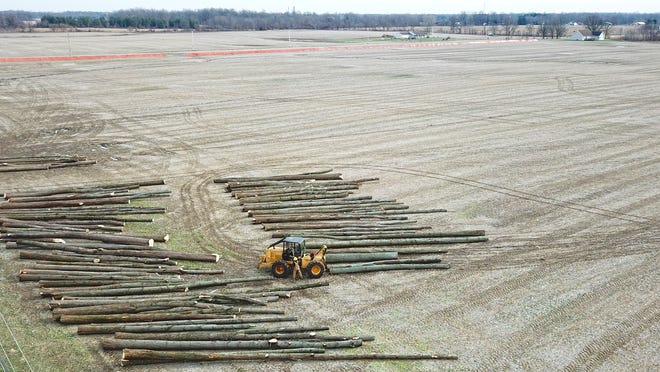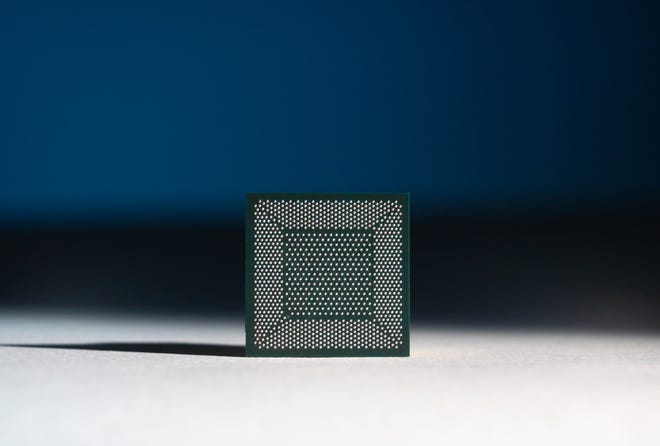
Intel has picked Greater Columbus for a new factory that figures to spark a new industry for the state.
The Silicon Valley semiconductor maker plans to invest $20 billion in a site in Licking County that will employ 3,000 workers, a source close to the project told The Dispatch.
How quickly such a development could occur depends in part on Congress, which is debating legislation that would provide incentives to bring chip-making back to the U.S.
Here’s what you need to know about the location, project, community and semiconductor production:
What is coming to Licking County?
An Intel factory that will make computer chips and employ 3,000 workers, according to The Dispatch’s source.
Intel will invest $20 billion into the site, the biggest in the state history. It could also spark a new industry for Greater Columbus and Ohio at large.
Where will the new chip factory be?
The site Intel intends to build on appears to be 3,190 acres that have recently been annexed from Jersey Township in western Licking County to the Columbus suburb of New Albany.
The area is bounded by the Franklin-Licking County line, Green Chapel Road, Mink Street and Jug Street
The land would become part of the burgeoning New Albany International Business Park, where tech giants Google, Amazon and Facebook have data centers.

About Jersey Township, Ohio
Jersey Township is about a half-hour’s drive northeast of Columbus on the western edge of Licking County. Route 161 runs through the township, which is heavily rural and home to a little more than 2,500 people, most of whom are white, according to census records.
Where is Jersey Township, Ohio? What you need to know about potential Licking County site
What does Jersey Township think of move?
Jersey Township is preparing for the biggest transformation in its history. The pending annexation would mean an investment of tens of billions of dollars and thousands of jobs.
“Close to half of the township will be gone with this transaction,” Jersey Township Trustee Dan Wetzel said. “Jersey Township will never be the same after this, that’s for sure.”
Ohio town reacts to impending development:New Albany annexation, development ‘transformational’ for Jersey Township
When will the Intel factory be built?
That’s unclear at the time. Part of it depends on Congress, which is debating legislation that would provide incentives to bring chip-making back to the U.S.
The Senate passed the U.S. Innovation and Competition Act in June that provides $52 billion in federal investments for research, design and manufacturing. The legislation is pending in the House.
About the CHIPS Act:What the CHIPS Act could mean for domestic production of computer chips, Ohio factory

What is a computer chip?
Chips are integrated circuits or small wafers of semiconductor material, usually silicon or germanium, embedded with integrated circuitry.
Chips form the brains of every computing device, according to semiconductor company Intel, and are used in thousands of products, including cars, cellphones, appliances, gaming consoles and medical devices.
Making just one chip takes at least three months, if not longer.
So it goes to reason that chip fabrication plants, or “fabs,” are huge capital investments and boons to local economies.
What are computer chips?Why are semiconductors so important?

What is Intel?
Intel is an American manufacturer of semiconductor computer circuits. The company’s name comes from “integrated electronics.”
Intel has about 110,600 employees worldwide, according to the company’s most recent annual report. Intel employs more than 53,000 people at U.S.-based innovation hubs in Oregon, Arizona, California, New Mexico and Texas, according to a company factsheet.
About company building Ohio chip plant:Here’s what you need to know about Intel
Why does the Intel project matter to Ohio?
While Ohio has been an manufacturing powerhouse, it doesn’t have any factories that make chips that are crucial to the U.S. economy.
Intel’s investment would be the biggest in state history.
Why do Intel factories matter to the US?
Chipmakers have been eager to bring back production of the chips to the U.S. as a result of a global supply chain crunch during the pandemic.
Currently, 12% of the world’s chips are made in the U.S., down from 37% in the 1990s, according to industry officials. About 80% are made in Asia.
Global supply-chain problems during the COVID-19 pandemic have led to massive shortages of the chips, many of which are made overseas. This has created long delays for U.S. consumers to be able to buy everything from cars to appliances.

